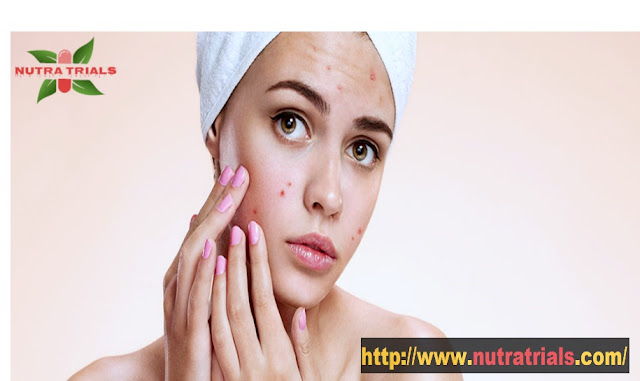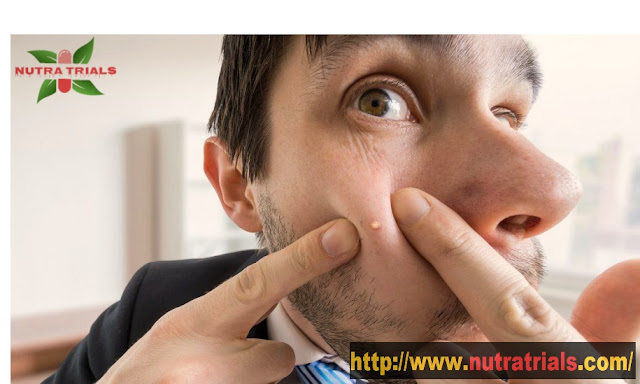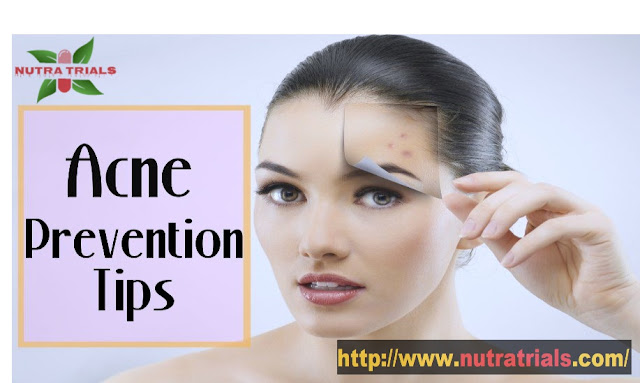There are dozens of skin conditions affecting every age group individuals. Teenagers and youths are highly prone to acne skin condition that include blackheads, cysts, pimples, and nodules. Acne is the worst chronic skin condition that invites arrival of pimples and dark spots on various segments of the body including back, shoulder, face, neck, upper arms, and chest. According to a recent dermatologist report, “around 60 millions of Americans are struggling with acne issues between 16 to 26 age group”.
Skin cells and sebum mass collectively into a wedge. This plug gets contaminated with bacteria and creates swelling to the outer surface. A pimple begins to produce when the cap starts to close down. Propionibacterium is a common bacteria that is responsible for pimples infection. According to recent reports and survey issued the frequency of acne depends on the pressure of bacteria, however not all bacteria sources cause pimple formation.
Most of the OTC medications available today include ingredients like:
Benzoyl peroxide: Leads to restrict sebum production, removes bacteria and replaces dead skin cells.
Retin-A: Leads to free skin pores through cell restructure.
Azelaic acid: Restricts bacterial growth and prevents lines from appearing on follicles.
Resorcinol: helps cut the blackheads and whiteheads formation
Salicylic acid: Works to restrict swelling and inflammation process.
It is advised to continue with the least strengthening sources because some creams and lotions are robust and lead to redness, burning, and irritation.
Blackheads: Black and clearly visible on the surface of the skin.
Cysts: Are visible on the skin surface and cause immense pain and filled with pus and if not treated conditionally may cause several scars.
Pustules: Observed on the surface of the skin that has the red appearance and includes pus on the outer surface.
Papules: They mostly resemble pink bumps and are small in size.
Nobules: Observed on the surface of the skin and are stable and painful with the presence of pimples.
About Acne
Acne condition usually arrives when sebaceous glands under the skin texture are highly active and may visit at any age but mostly are active during puberty phase. Although there is no risk associated with that, they leave worst looking scars and spots on the face and other body segments. Sebaceous glands produce more oil during such phase and cause pimples arrival, which is common in both male and female, which is due to unbalanced hormone level.Causes of Acne Arrival
The skin of an individual includes tons of pores that are connected with oil glands under the epidermis, and follicles link the glands to skin pores. Follicles attach the glands to the pores. Follicles are tiny cysts that create and discharge a liquid. Organs deliver liquid production sebum that carries damaged and dead cells of the skin to outer surface. The cause of pimples arrival happens when follicles are jammed due to excess oil production under the epidermis.Skin cells and sebum mass collectively into a wedge. This plug gets contaminated with bacteria and creates swelling to the outer surface. A pimple begins to produce when the cap starts to close down. Propionibacterium is a common bacteria that is responsible for pimples infection. According to recent reports and survey issued the frequency of acne depends on the pressure of bacteria, however not all bacteria sources cause pimple formation.
Hormone Factors
Hormones are also responsible for acne formation when they get unbalanced or highly active it leads to swellings and pimple formation. The androgen is a common hormone that experiences a boost to its level during the adolescence phase, and in all women, it gets converted to estrogen level. Rise to their level cause oil glands to lift, and skin pore gets enlarged and produce excess sebum and makes the development of bacteria to cause pimples. There are various other causes of acne infection arrival such as menstruation period, mental stress, greasy and oily cosmetics, several medication and exposure to dirt pollution.Treatment of Acne
Acne is not a much serious problem to get worried, but still, it arrives in some ways and has varieties of treatment options available. The condition of acne decides what method to use for its cure. It could be severe acne, mild acne, and moderate acne presence.Mild Acne
To cure and prevent the presence of mild acne there are various OTC medicines available including creams, gels, soaps, lotions and pads that are applied to affected area. You cannot just choose any medication since it requires prescription and consultation with a dermatologist. For sensitive skin surface, skin creams and lotions are considered to be the best option. For dry and oily skin alcohol-based gels are best to apply.Most of the OTC medications available today include ingredients like:
Benzoyl peroxide: Leads to restrict sebum production, removes bacteria and replaces dead skin cells.
Retin-A: Leads to free skin pores through cell restructure.
Azelaic acid: Restricts bacterial growth and prevents lines from appearing on follicles.
Resorcinol: helps cut the blackheads and whiteheads formation
Salicylic acid: Works to restrict swelling and inflammation process.
It is advised to continue with the least strengthening sources because some creams and lotions are robust and lead to redness, burning, and irritation.
Corticosteroid injection
Acne cyst formation may sometime become highly inflamed and might lead to scars formation. So in such case, a dermatologist might work to inject diluted corticosteroid to control the condition and remove the cyst. It leads to restrict inflammation, reduce scars and boost up the healing process and cyst would get removed quickly in some days.Oral antibiotics
Oral antibiotics are usually recommended for acne prone patients for up to six months period only and not more than that because most of the sources are antibiotics and may damage skin cells. The dose starts with highest to lowest to clear acne formation. Acne is more likely to become immune to limited rather than oral antibiotics. Antibiotics can fight the extension of bacteria and decrease the inflammation process quickly. The most common prescriptions given for acne are tetracycline and Erythromycin.Antimicrobials
Antimicrobials are typical treatment options available to cure the acne symptoms among individuals who are struggling with severe and moderate acne formation. The most popular medicines prescribed for such treatment include clindamycin and sodium sulfacetamide. In some cases, a dermatologist may also specify the use of retinoid that is derivate Vitamin A. This leads to prevent the formation of blackheads and whiteheads. The most common prescribed retinoid treatments include Tretinoin also called as Retino A, Adapalene, and Tazarotene.Isotretinoin
Isotretinoin is an oral retinoid, and has substantial influence and is used to treat cystic acne and severe acne formation that is not getting treated despite several treatments and medications. It is a rigorously regulated medication with possibly dangerous side effects. The patient must sign an approval form to assume that they recognize the dangers. Wrong sides of such treatment options may result out in nosebleeds, dry skin, abnormality, dry skin and mood swings. Patients who include isotretinoin must withdraw vitamin A supplements, as these could point to vitamin A toxicity.Types of Acne
Acne differs in its color, size, and appearance on the skin surface according to its severity. Some common types of acne includeBlackheads: Black and clearly visible on the surface of the skin.
Cysts: Are visible on the skin surface and cause immense pain and filled with pus and if not treated conditionally may cause several scars.
Pustules: Observed on the surface of the skin that has the red appearance and includes pus on the outer surface.
Papules: They mostly resemble pink bumps and are small in size.
Nobules: Observed on the surface of the skin and are stable and painful with the presence of pimples.
How To Prevent Acne?
We would be discussing some possible tips and suggestions that could treat the possibility of acne and restrict is arrival.- Use mild soap and cleanser to wash your face twice daily with warm water to keep it clear and free from dust and polluting agents.
- Avoid scrubbing and bursting the appearance of pimples that leads to swelling, redness appearance and its blockage.
- Popping up the pimples must be avoided as it leads to dark holes and black spots on the skin surface.
- Before application of any skin cream or lotion, one must wash their hand with good handwash to avoid any skin irritation or side effects.
- For sensitive skin, one must avoid oil-based products and must remove all makeups at night before going to bed.
- Clean specs you were always as they include the residue of skin and also some sebum sources.
- If acne is visible on the chest, shoulders or back try wearing loose clothes and let skin free. Avoid wearing tight clothes such as caps and scarves and keep them clean and maintain hygiene.
- Avoid applying greasy products related to hair care and keep hair clean and wash it regularly with a gentle shampoo.
- Avoid too much direct exposure of the skin to harsh UVA rays of the sun that leads to producing high sebum and may cause sunburn and damage to skin tissues.
- Avoid taking too much stress that lifts the high production of cortisol and adrenaline that leads to high acne formation.
- Always prefer getting consulted with a dermatologist for better and safe treatment options and this would keep skin safe and will not cause any side-effects.
- If possible use electric shavers to shave and avoid application of aftershave creams and lotions that mostly include high hazardous chemicals that may attack skin negatively.




Comments
Post a Comment